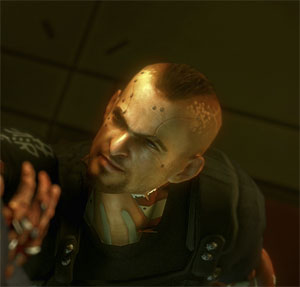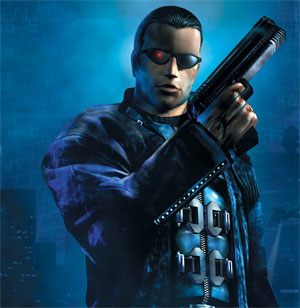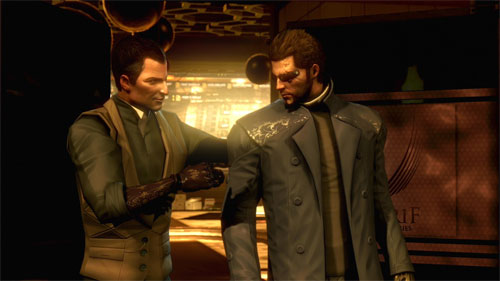Blog / I didn't ask for these boss battles
- Date
- September 14, 2011
- Tags

There have been a few articles about the problem with Deus Ex: Human Revolution’s boss fights against the augmented mercenary group known as the Tyrants, mostly centering around the argument that even in a game full of choices, sometimes violence is the only option. That’s one issue, but there are larger problems:
- The player has no warning about these encounters
- The player has very little information about who these people are
- The fights are spaced well, but appear arbitrarily in terms of plot
- Stealth, hacking, or pacifistic characters have no recourse but violence with guns or environmental hazards. Compare this to a game where thorough hackers could kill boss characters by literally speaking two words to them
All of these issues were handled better in the original Deus Ex, but are troubling even taken on their own. The player’s first encounter is with Barrett, the man with the mini-gun arm, after shooting/sneaking through an underground FEMA facility. There is some setup for this fight, about 1/4 of the way into the game, as a cutscene earlier in the level shows Barrett and his two augmented buddies outside the building. But the encounters with Fedorova and Namir come out of nowhere, apparently when the designers realized that 2/4 and 3/4 of the game had passed and the player hadn’t shot anyone significant.
You fight Fedorova when tracking down Eliza Cassan, who is apparently her guardian. Likewise, Namir appears when it’s time to confront Zhau Yun Ru, head of Tai Yong Medical, a character who actually matters. Why is Fedorova protecting a news reporter? Why is Namir following Zhau around? If he’s her bodyguard, why does he gallivant around the world instead of diligently protecting this woman who stays in China? Is that what the Tyrants do?

Compare this to the original Deus Ex, where you had multiple opportunities to kill agents Hermann and Navarre. On a plane, in the rain, by a train. Their final confrontations were set up at length: Hermann taunts you through Paris, Navarre guards the exit from UNATCO headquarters and is a conversation topic of a cowed Alex Jacobson. By the time the plot allows you to kill them, most players could name the cybernetic agents, describe their personalities, even identify their favorite soda flavors. You went on missions with them. They were people, and when you learn they’re working for an evil organization you might feel guilty, enraged, or scared.
What about Human Revolution? Try reading Reddit comment threads about the boss fights, see how they’re identified by number rather than name (Namir is “Boss 3” more often than “Namir the boss”). It’s fitting that the moral quandary in this game is about humans becoming robots, because that describes the emotional resonance of your enemies.
How could this have been improved? You could start by having these enemies appear more often. What are they doing? What are their goals and motivations? The game’s unofficial wiki shows these are three-dimensional characters with complete backstories… that you only learn about after buying the tie-in novel. I’m guessing you’re supposed to be intrigued enough by the game to purchase the books, or so excited before the release of the game that you buy the books in advance. But instead it feels like you’re just fighting hollow video game bosses, rather than real people who happen to be video game characters.
It’s possible to imagine entire missions bent around the Tyrants. Sneak into Namir’s house and recover some information, letting the player listen to Namir’s favorite music and see his treasured art collections. Pursue Fedorova’s old boyfriend and learn about her past life. Assassinate the weapons specialists who trained Barrett and put that gun in his arm.

That would be a good start. It’s not perfect characterization, but you can see it from here.
